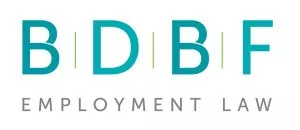Beware job hunter - your LinkedIn connections may not belong to you, writes Paula Chan - a partner at law firm BDBF.
The pandemic has prompted widespread reassessment of lifestyles and careers. Some call it the "Great Resignation", others the "Great Re-evaluation".
For those with client-facing roles where clients are their career currency, this re-evaluation should not ignore the question of who owns LinkedIn connections and what happens to them when employment ends.
LinkedIn is a social media platform for the business community, the purpose of which is to build a professional network of connections.
Most employers encourage their employees to create and use their own personal account to develop business and connect with clients.
Whilst LinkedIn's user agreement states the account belongs to the user, employees should not assume the same applies to their connections.
Virtual working has led employers to tighten up contracts to protect client relationships.
Given relationships are so often the product of significant time and investment, the law permits the employer to protect them within reasonable limits.
Controversially, employment contracts or settlement agreements increasingly state that LinkedIn connections are the employer's property and that employees must delete them when they leave.
Employees would be well-advised to resist such provisions at the outset of employment, especially if they attempt to capture pre-existing connections.
Some contracts contain more general prohibitions stopping employees from taking client contact details, which could capture LinkedIn connections.
LinkedIn is a database of contacts which may of itself amount to confidential information which must be handed over.
More commonly, organisations turn to restrictive covenants to stop contact or solicitation of clients for a period after termination.
If properly drafted, covenants of this type can be enforceable and may hamper an employee's social media activity.
LinkedIn provides individuals with direct access to clients, whether through public postings or private messages.
Tread carefully as LinkedIn messages (including private messages and public posts) may amount to solicitation and will be disclosable in legal proceedings.
Even announcing a new role on LinkedIn, including through LinkedIn's automatic updates, may amount to an employee committing unlawful solicitation.
If they go on to comment on their move or share further details about where and how they can be contacted this is more likely to amount to solicitation.
Non-solicitation covenants can be difficult to police online forcing more employers to turn to the (harder to enforce) non-compete provision.
As the world becomes increasingly virtual, employers are dedicating more attention to protecting the value LinkedIn offers and monitoring departing employees. User beware.
LinkedIn has been contacted for comment.
Originally published by the Evening Standard.
The content of this article is intended to provide a general guide to the subject matter. Specialist advice should be sought about your specific circumstances.

